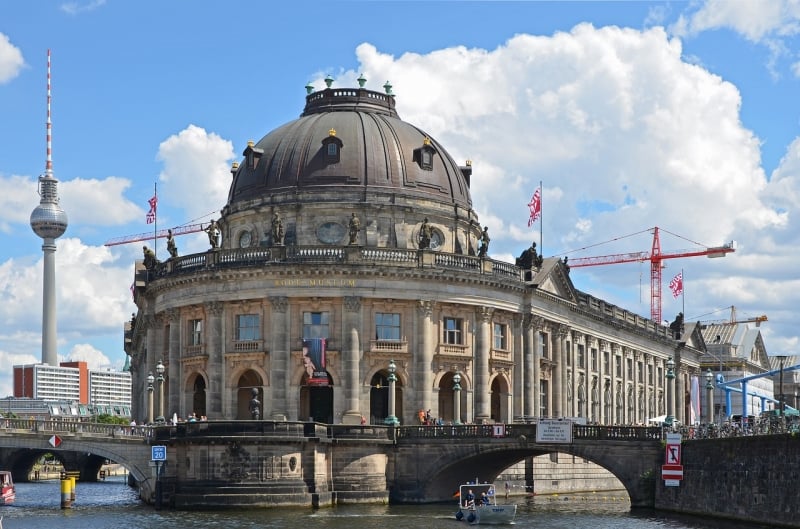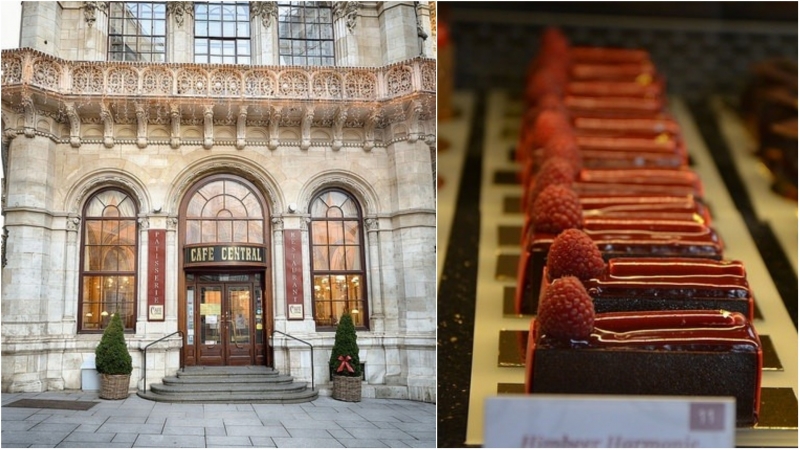If you’ve always wanted to have a quintessentially European experience, make your travel plans for a sojourn through Central Europe now! Comprising of countries like Germany, the Czech Republic, and Austria amongst others, this vibrant region contains some of the most beautiful and culturally rich cities you’ll find in the world.
This itinerary will bring you to Germany, Czech Republic and Austria, but you can always extend your trip to other countries like Hungary, Slovakia and Poland. To plan my travels, I used GoEuro, which conveniently lists train, plane, and bus options between any two cities in Europe. For accommodation options, I recommend Airbnb and Hostelworld to find affordable places to stay at.
Without further ado, here are some ideas for a fun adventure through Central Europe in nine days.
Day 1: Berlin
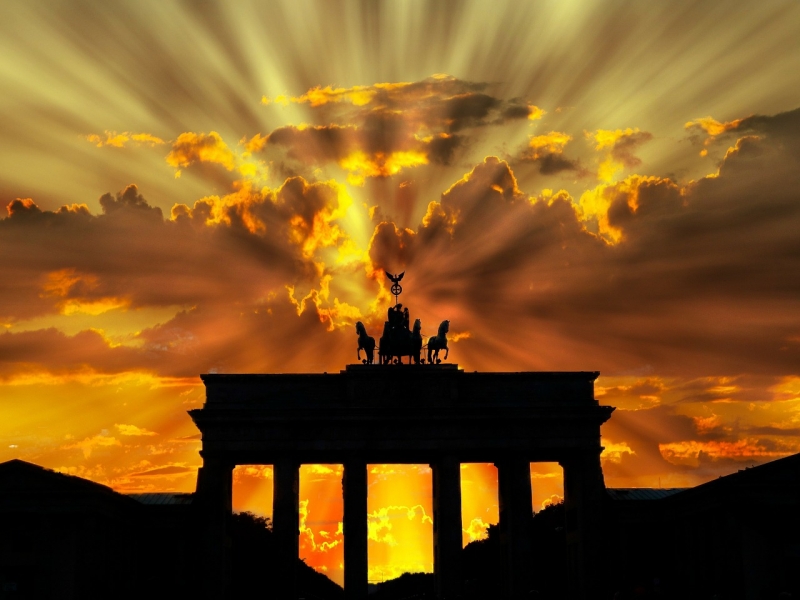
Begin your trip by flying into the cosmopolitan capital of Germany, Berlin! With the launch of Scoot’s new direct flights to Berlin from Singapore, travelling to the region has never been easier. There’s no better place to begin your trip than in this amazing city full of history and vibrancy.
Visit the Memorial to the Murdered Jews of Europe
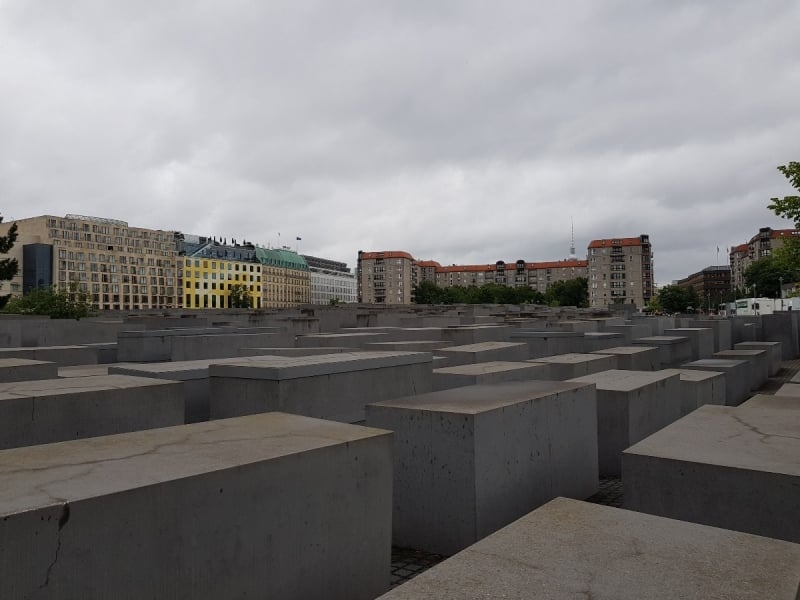
In the middle of the city, tall buildings suddenly give way to a large patch of concrete blocks differing in size. This sombre site of remembrance pays respect to the Jews who were murdered during the Holocaust in WWII. The undulating terrain and lack of any contextual information provide much room for reflection.
Do visit the underground information centre as well, which features tastefully-designed rooms exhibiting the stories of the victims and the extent of their persecution, allowing you to put names and faces to the horrific statistics.
Stroll along the East Side Gallery to see where art and history meet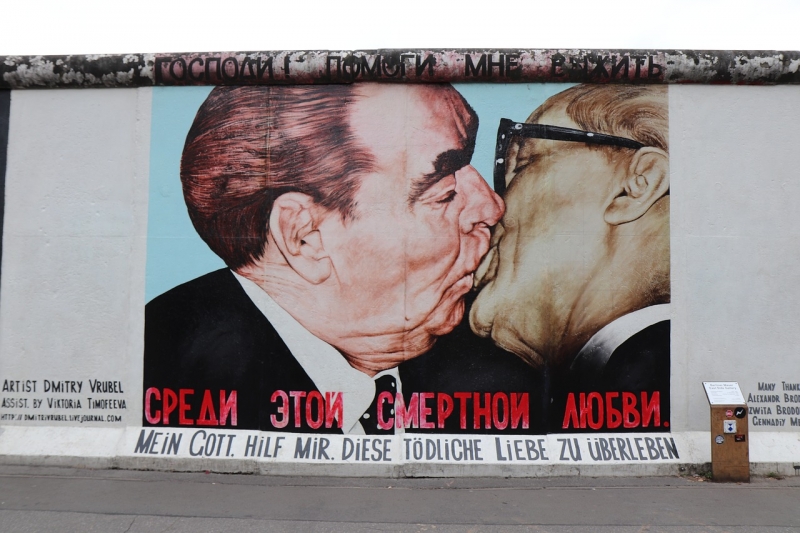
At 1.3 kilometres in length, the East Side Gallery is the longest open-air gallery in the world, as well as the longest continuous section of the former Berlin Wall left standing. In the immediate aftermath of the fall of the Wall, over a hundred artists flocked to the city to begin painting on this section, conveying the political zeitgeist of the times.
To experience a unique confluence of art and history, this stretch of murals should definitely be on your must-see list of attractions.
Day 2: Berlin → Munich
Take in a slice of culture at Museum Island
Start your second day in Berlin by heading to Museum Island, a collection of five world-renowned museums featuring art and cultural exhibits from ancient civilisations. The most popular, Pergamon Museum, showcases artefacts from the Ancient East like the stunning Ishtar Gate from the city of Babylon, while others like the Altes Museum (Old Museum) and Altes Nationalgalerie (Old National Gallery) features artwork from ancient Greece all the way to the Renaissance.
But for art-lovers, that’s not all you can see…
Whet your appetite for art on a graffiti art walking tour
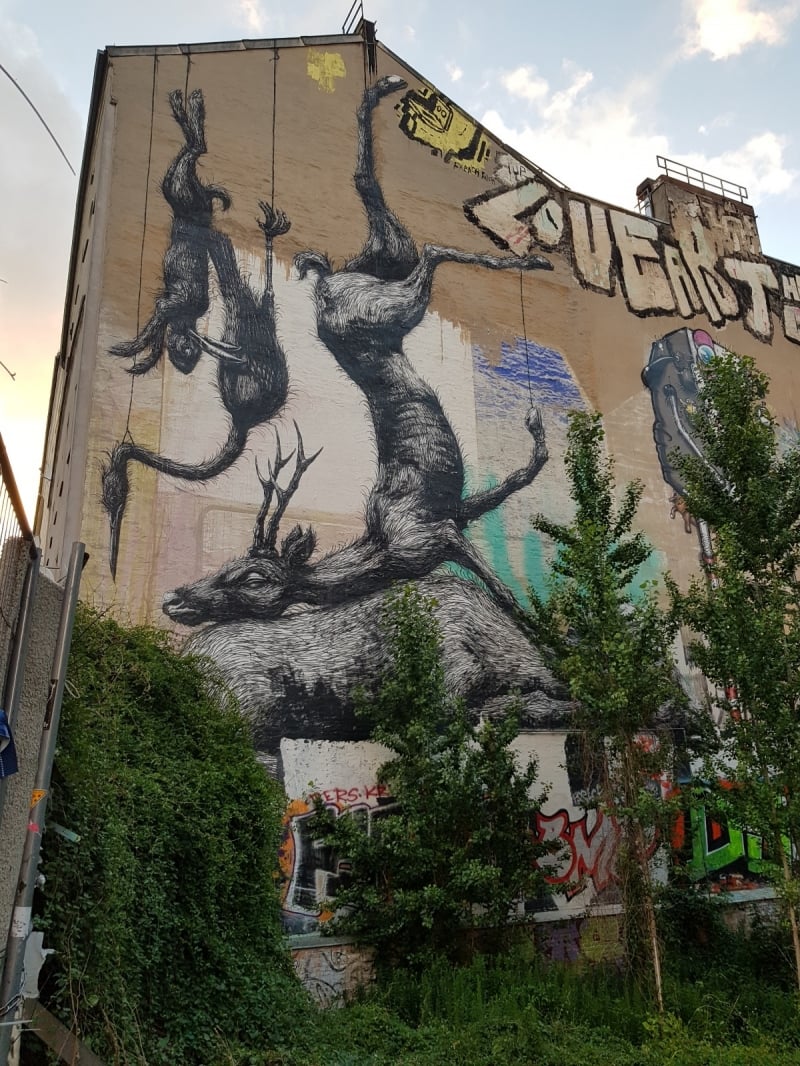
After the fall of the Wall, Berlin experienced an influx of urban artists that took to the streets and used its buildings as their canvases, covering them with many thought-provoking murals. As a result, graffiti art is now an important component of the underground art and culture scene.
Go on a guided walking tour through neighbourhoods like Kreuzberg, and learn more about the different graffiti artists and their distinctive styles. Alternative Berlin features guides who are artists themselves and offers you the chance to make your own artwork to bring home.
There’s much more to do in Berlin, but alas, you have to move on or you’ll never leave! You can take a 7.5-hour bus ride to Munich, or to save time, catch a short 1.5-hour flight, but it costs at least twice as much. Alternatively, you can take an overnight bus, which saves you the hassle of booking accommodation in Munich for one night.
Day 3: Munich
Recharge and shop at Viktualienmarkt (Farmer’s Market)
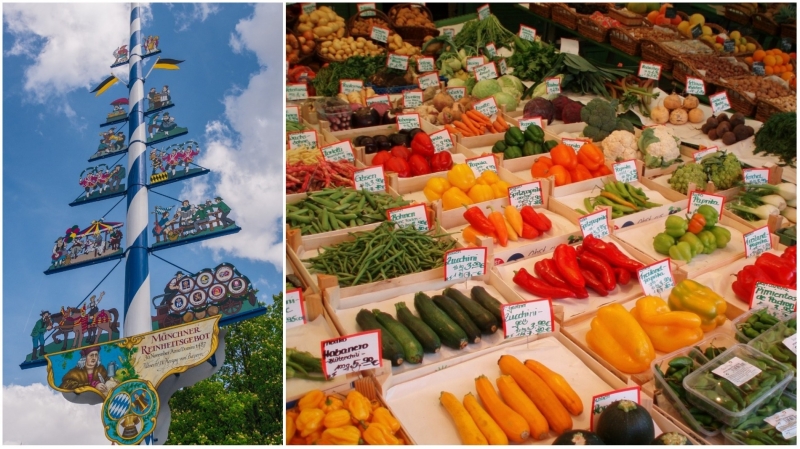
Upon reaching Munich, you’ll surely be famished and in need of a good meal to recharge, so head on over to Viktualienmarkt. A farmer’s market that has expanded over time into a sprawling food market, you’ll be able to find all sorts of fresh produce, exotic dishes, and Bavarian specialities like roasted pork knuckle and sauerkraut.
Chill and relax at an outdoor beer garden
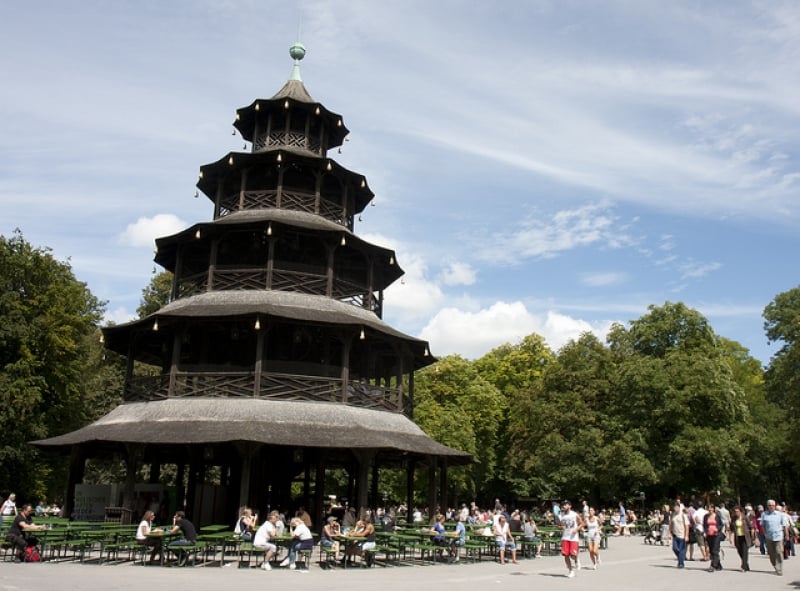
Image credit: Nathan Rupert
Beer gardens, which are outdoor areas where beer and local food are served at shared tables, originated in Munich, and you can find them dotted all around the city. When the weather is good, these are great areas to grab a drink and hang out with your friends while sharing some delectable Bavarian specialities.
One of the most popular beer gardens in Munich can be found at the Chinesischer Turm (Chinese Tower) at the English Garden. On weekends, a brass band plays at the first level of the tower to provide a musical accompaniment to your meal. The garden often attracts a youthful crowd as it is close to the University of Munich.
Experience the lively atmosphere at Marienplatz (Mary’s Square)
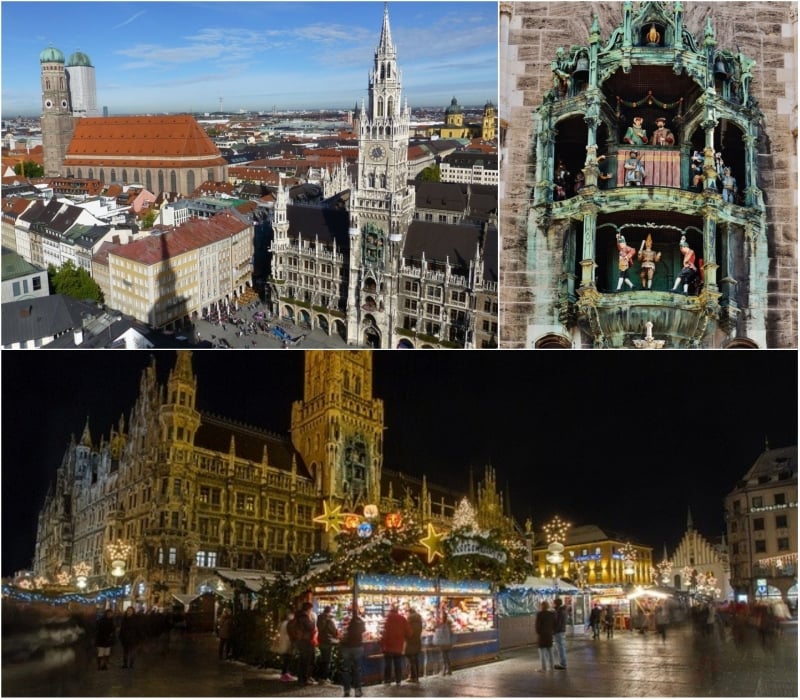
Image credit: (bottom) Jason Mrachina
End your day by exploring Marienplatz, the city centre of Munich. A lively and historic area, make sure to arrive by 5pm to see the Glockenspiel performance, where motorised figurines dance and twirl inside the clock tower of the city hall.
During the holiday season, Munich holds its famous Christmas market, which has been celebrated in the town square since 1642. It is a great place to buy Bavarian wood carvings, traditional toys, and seasonal Christmas delicacies.
Day 4: Munich → Salzburg
Salzburg is just a 3-hour bus ride away from Munich, so you can leave early in the morning and still have plenty of time to explore for the rest of the day! This Austrian city is perfect for a relaxing weekend getaway, and the mountains surrounding the city make for a beautiful backdrop.
The hills are alive with the Sound of Music
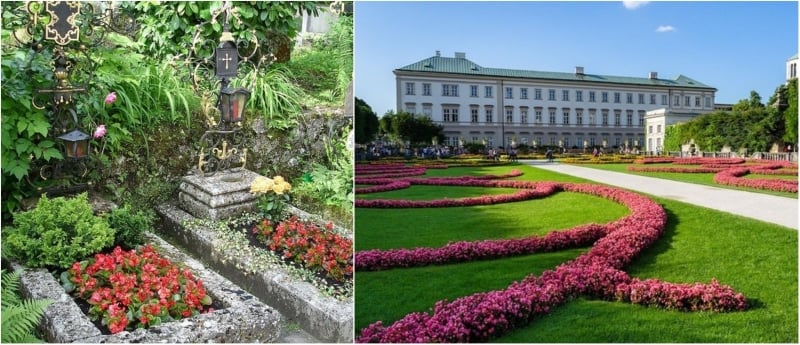
Image credit: (left) Rhiannon Boyle, (right) Guillaume
Salzburg is perhaps best known as the location where the iconic musical film The Sound of Music was filmed, and the city draws many tourists wanting to walk in the footsteps of the fictional von Trapp family. A few of these locations, such as the Mirabell Palace and Gardens, and St Peter’s Monastery, are free to enter, but others may have entrance fees.
Alternatively, you can hop on a bus tour, which will bring you to the various locations, while guides provide interesting tidbits about the movie. If you’ve been touched or inspired by the film, these picturesque sights are definitely not to be missed.
Tour the well-preserved Hohensalzburg Fortress for an amazing view of the city
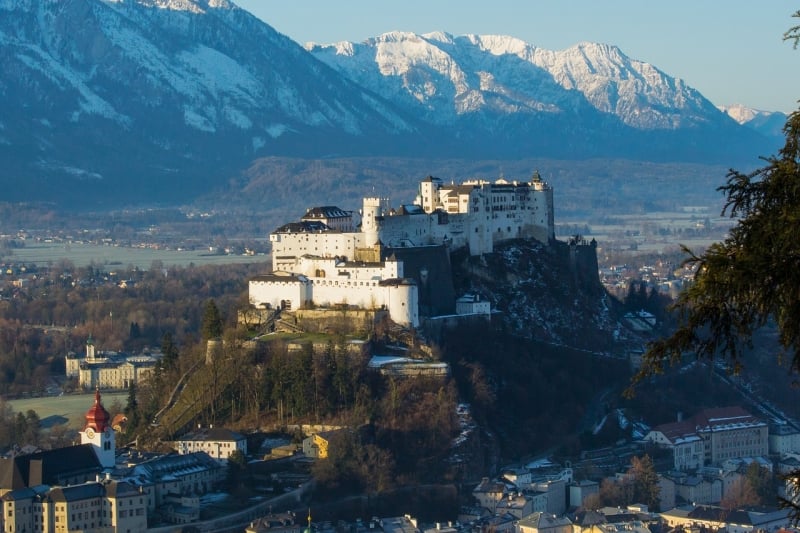
Constructed in 1077, the Hohensalzburg Fortress rises over the rest of the city and is one of the biggest medieval castles in Europe. Ride the funicular railway up the hill, or take a leisurely walk up to the fortress, where you can see the restored castle chambers and a museum featuring military artefacts from medieval times, including a macabre “torture museum” featuring actual instruments used to torture prisoners in the castle!
And when you’re done exploring the castle grounds, head to the top for a stunning view of all of Salzburg. Get your cameras ready!
Snap a picture of renowned composer Mozart’s birthplace
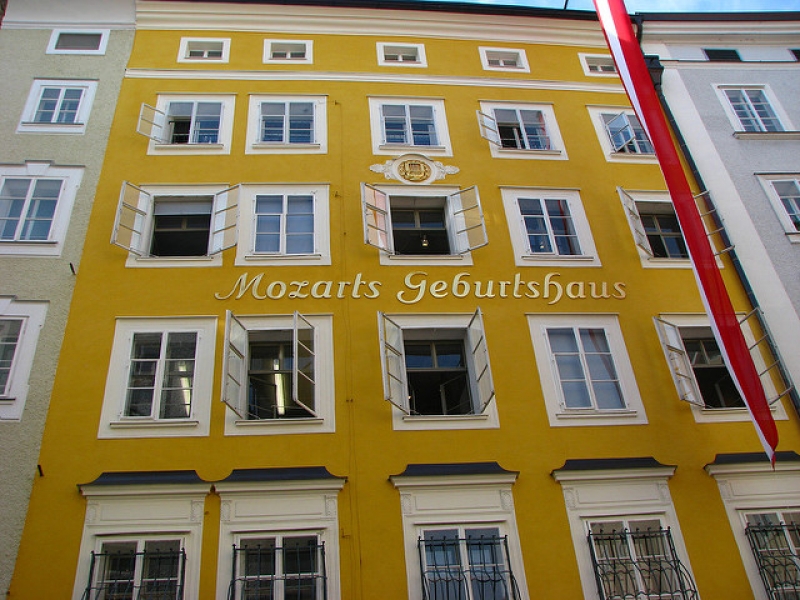
Image credit: Abishek Awasthi
Wolfgang Amadeus Mozart, one of the world’s most famous classical composers, was born in Salzburg on 27 January 1756. His birthplace has now become one of the most visited museums in Austria, thanks to a legion of his dedicated fans and history buffs.
Here, you can tour an accurate reconstruction of the middle-class apartment where he and his family lived in, and examine original certificates, letters, and memorabilia that document his life in Salzburg. You’ll also get to see his own violin and clavichord, amongst other historical instruments that belonged to him.
Day 5: Salzburg → Berchtesgaden
Go on a scenic day trip to Berchtesgaden National Park
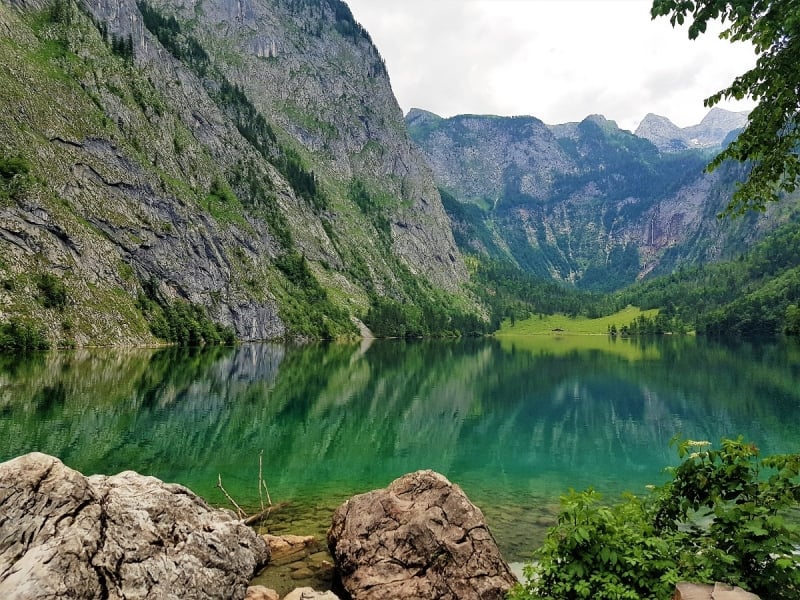
After touring cities for four days straight without any rest, you deserve a scenic break! Embark on a day trip to Berchtesgaden National Park in the region of Bavaria near the border with Austria, and experience its unspoiled natural beauty.
The highlight of the park is definitely Lake Konigssee. Sail on a boat on the alpine lake, and marvel at the sheer cliffs that surround it. Your boatman will blow his trumpet, and you can hear the echoes all around the lake, a traditional custom. The ride will take you to a smaller Lake Obersee. Its amazingly crystal-clear waters reflect the towering mountain ranges around it, making for a spectacular backdrop to your photos.
Or, you can explore the untouched nature by going on long hikes in the park’s 250-kilometre network of hiking trails. As you pound the trails up the Watzmann or Jenner mountains, don’t forget to look down for some magnificent views of the park.
Day 6: Salzburg → Vienna
From Salzburg, you can take a 3-hour train ride to Vienna, the capital of Austria and once the cultural and historical heart of the Austro-Hungarian Empire.
Shop for exotic treats at the Naschmarkt
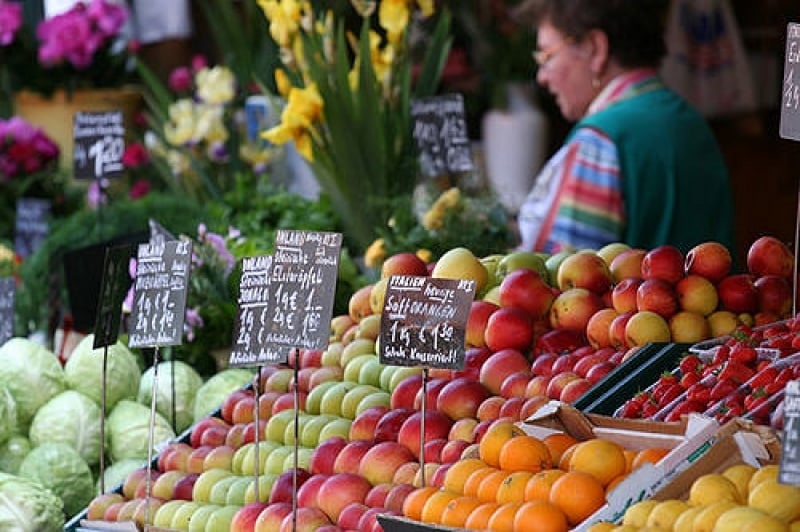
Image credit: Clemens Koppensteiner
Vienna’s most popular market, the Naschmarkt is a long stretch of about 120 market stalls and restaurants offering exotic delicacies from countries all over the world, ranging from traditional Viennese desserts to Italian, Vietnamese and even Indian delights.
On Saturdays, a weekly flea market is held, giving you a chance to snap up some cheap bargains. Spend a leisurely morning with your friends grabbing a bite and hanging out in the outdoor areas of this long-running market.
Catch a world-renowned performance at the Vienna State Opera
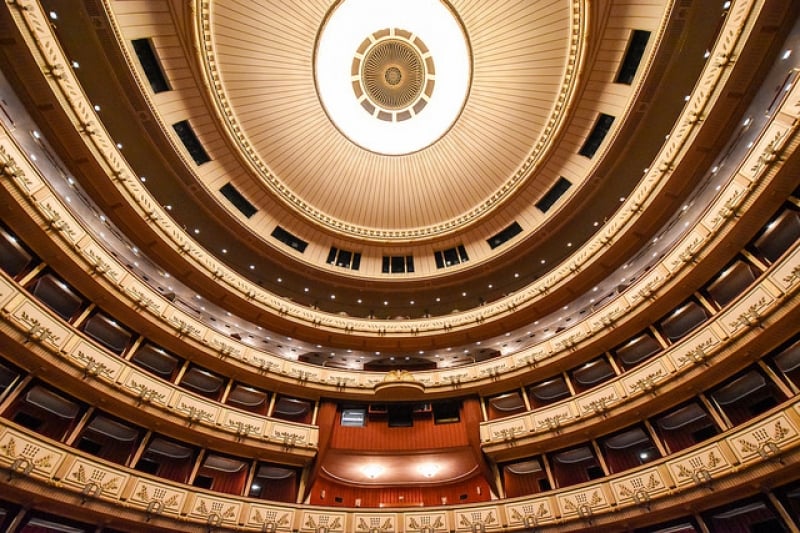
Image credit: Gwendolyn Stansbury
No trip to Vienna would be complete without seeing the stately Vienna State Opera. With over 50 operas or ballets on show around 300 days per year, you simply must catch a show when you’re in the city. While you can book tickets online or with licensed agents, those on a budget can get standing room tickets by queuing at the box office 90 minutes before the performance starts.
You should also definitely opt for a guided tour of the interior, to learn more about the history and architecture of the opera house.
Day 7: Vienna
Marvel at the splendour of the grand Schonbrunn Palace
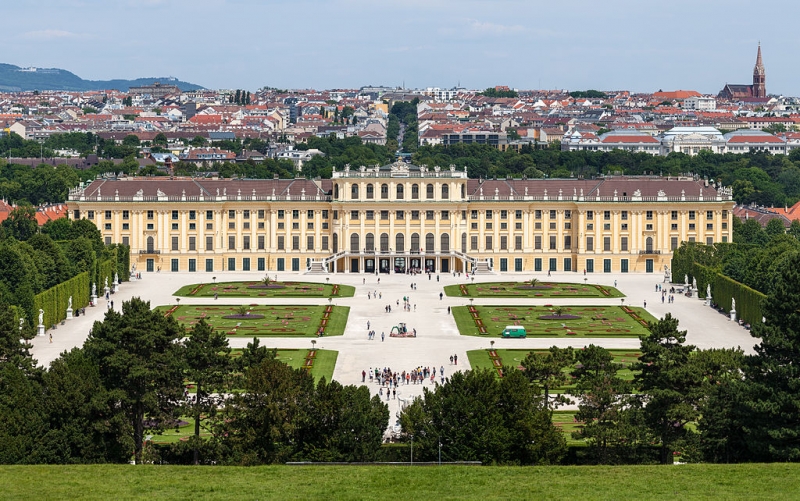
Image credit: Thomas Wolf
The majestic Schonbrunn Palace is Vienna’s most popular tourist destination, and it’s not hard to see why. Modelled after the Versailles Palace in France, this majestic 1,441-room palace built in a Baroque neoclassical style is one of the most important architectural, cultural, and historical monuments in Austria. The former summer residence of the Habsburg monarchy that ruled Austria in the past, its sprawling grounds are home to magnificent gardens and imperial ceremonial rooms.
The palace gardens are free to enter, but you will need to buy a ticket to enter the palace itself. Go on a guided tour to learn more about the history of the palace. Make sure to come early, because it gets crowded fast!
Walk in the footsteps of intellectuals at Cafe Central
This unassuming Viennese coffeehouse may not look like much on the outside, but it was once the meeting place for public intellectuals like philosopher Sigmund Freud and revolutionary leader Leon Trotsky, who would exchange ideas and debate over pressing issues of the day over a cup of coffee or a slice of cake.
The coffeehouse’s impressive interior, with high walls and Renaissance-styled columns, provides a great atmosphere to relax and chat with your friends over traditional Viennese coffee and sweet desserts. You’ll feel like you’ve gone back in time at Cafe Central!
Ride a tram around the Ring Road and see famous historical buildings
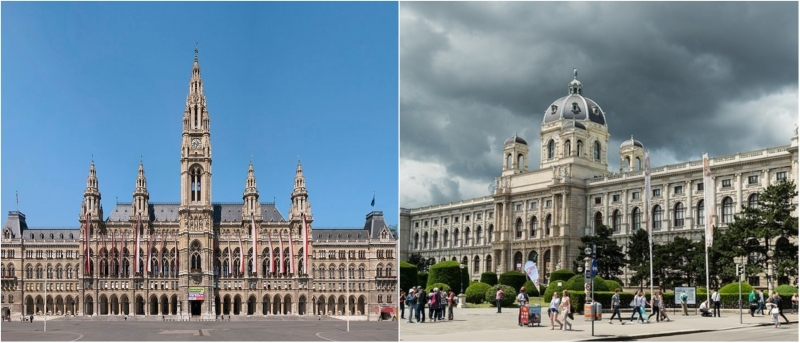
Image credit: (left) Thomas Ledl, (right) Sandor Somkuti
The 5.3km long Ring Road is a circular road around the historic Old Town district, that was constructed in the late 19th century. Many of the city’s large public buildings were then erected around this ring road, like the City Hall and the Natural History Museum. These architectural masterpieces are what makes the city distinctly ‘Viennese’, and it’s worth taking a picture of them.
For a comfortable way of viewing the different buildings, you can hop on the Vienna Ring Tram, which departs every 30 minutes from Schwedenplatz. The ride around the road takes 25 minutes, but you cannot disembark from the tram. Alternatively, you can take the Red Lines #1 and #2, which overlap for part of the Ring Road, but you have to switch trams midway to complete the full loop.
Day 8: Vienna → Prague
From Vienna, it takes roughly four hours to reach Prague by train or by bus, and both cost almost the same amount, so do check the prices on GoEuro for your desired date of travel to decide which option you want.
Visit Prague Castle for a scenic view of the city
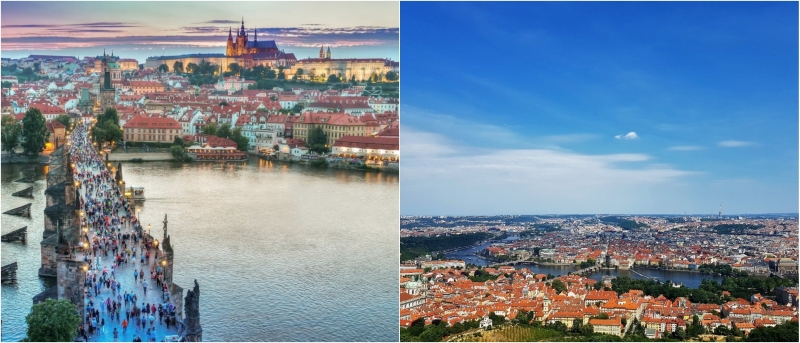
The Prague Castle complex is visible from every inch of the city and is the most popular tourist destination in Prague, making it a great way to start your day in the city. It holds the record for being the largest ancient castle in the world according to the Guinness Book of Records and was founded in the 9th century. Its courtyards and magnificent buildings have been home to kings and emperors and are important cultural sites in the country.
For a leisurely way to explore the castle, walk across iconic Charles Bridge, tour the Castle grounds and snap a picture of the whole city at the top. Then walk along the streets of Mala Strana, a charming little district located right next to the castle with local restaurants and souvenir shops.
Take a picture along the John Lennon Wall
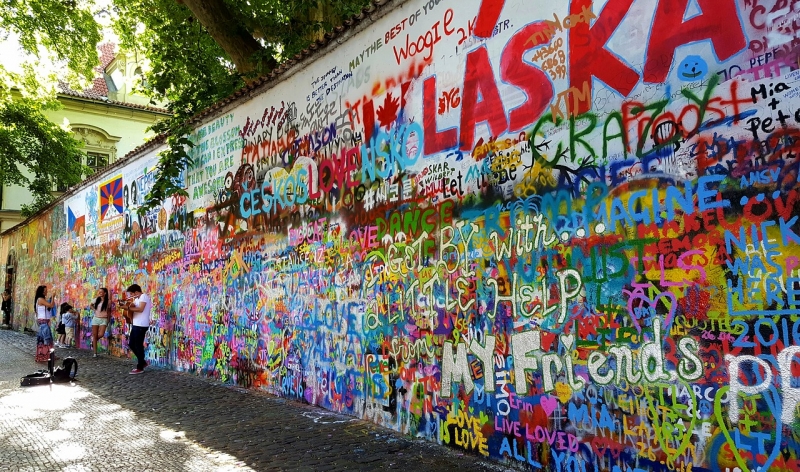
Ob-la-di, ob-la-da, see this wall, ya? Beatles fans, don’t forget to check out the John Lennon Wall in the Mala Strana district. Originally a wall with protest text/lyrics on it when Prague was still under Communist control, the death of John Lennon on December 8th 1980 sparked Beatles fans to show their grief by painting his face and Beatles’ song lyrics on the wall.
Although owned by the Knights of Malta, who have painted over the wall multiple times, people have returned to adorn the wall with their artwork, and so the wall remains as it is. Leave your own mark on the wall when you visit!
Take an evening stroll along the River Vltava
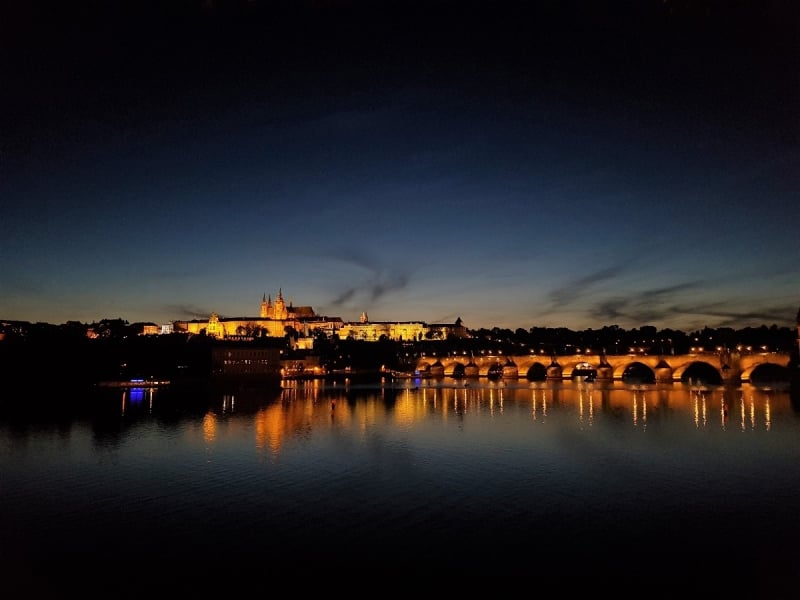
The River Vltava flows through the centre of Prague and played a fundamental role in the early days of the city. It separates the Old Town and New Town from the Prague Castle and Mala Strana district. At night, the bridges and buildings light up, providing a golden splendour to the riverside.
You can take a stroll along the banks of the riverside, pack a meal and savour it while looking out over the water, or dine at one of the riverside restaurants, which have floating terraces on the river itself. You can also choose to do a river cruise, for a more comfortable way to explore the river.
Day 9: Prague
Watch the Astronomical Clock strike on the hour
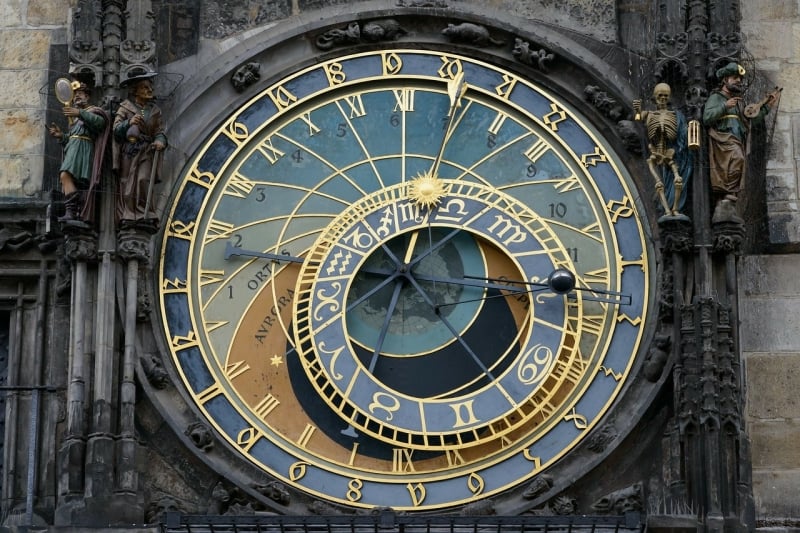
This giant clock, located on the Old Town Hall in the centre of the city, is a real scientific marvel. Built in 1410, this 600-year-old clock is a complex piece of machinery that has many clock components detailing different ways of telling the time, seasons, and even phases of the moon.
Crowds gather on the dot every hour to hear it chime, and sculptures surrounding the clock symbolising the entity Death or Vanity move in tandem. Don’t miss your chance to see this historic contraption for yourself!
Explore the Jewish Quarter
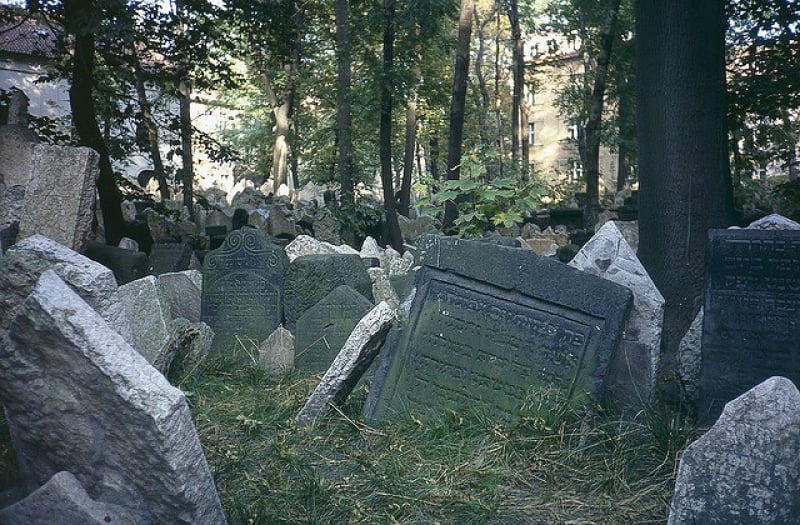
Image credit: Peter
The Jewish Quarter, or Jewish Ghetto as it came to be known, is the best preserved complex of historical Jewish monuments in Europe. Over the centuries, the Jews were being increasingly persecuted and forced to live in this section of Prague. During the Nazi occupation of Czechoslovakia, the area was preserved and labelled as a “Museum of an Extinct Race”.
In the Quarter, you’ll find six synagogues, including the Old-New Synagogue, which was built in the 13th century and is the oldest preserved synagogue in Central Europe. There’s also an old Jewish cemetery and Jewish artefacts on show throughout the Quarter. Enlighten yourself with the history of the Jews with a trip to the Quarter.
Before you leave, quench your thirst with a Czech beer
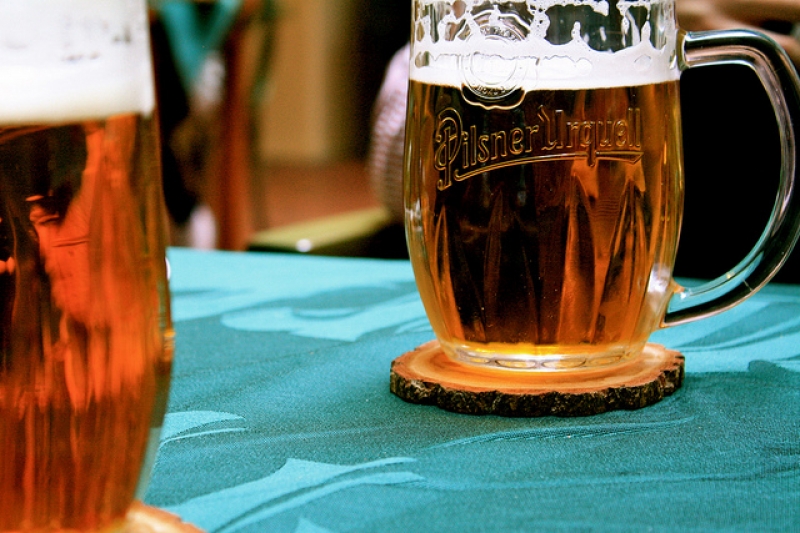
Image credit: Hugues Le Chevallier
You may have heard that Czech beer, or pivo as they call it, is cheaper than water, and that’s absolutely correct. Its quality remains top-notch, however, and the Czechs are very proud of their beer, as shown by how they consume an average of 142.4 litres per person every year, the most in the world!
Its most famous brand, Pilsner Urquell, can be found in almost every pub, and is instantly recognisable by its bulbous shaped mug and golden liquid with a foamy top, delivering a crisp, sharp, and refreshing taste. You’ll be an instant fan.
There you have it, a 9D8N itinerary that will give you a taste of all the exciting things to do in Central Europe! This rich and vibrant region has so much more to offer, from the Alps in Switzerland to the youthful atmosphere of Budapest in Hungary. We hope that this guide has piqued your interest and given you some inspiration for your next trip to Central Europe.
